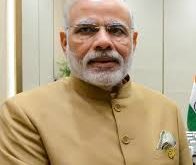Hair loss of 50 to 150 hairs per day is average; hair usually regrows. Re-growth may not be possible if the hair strand is thinned.
Hair loss affects most men due to hormonal changes and aging at some point in their lives.
This happens to some women as well. If you’ve been experiencing baldness and are considering a hair transplant but are unsure where to begin, don’t worry; we’ve got you covered.
We contacted Dr. G K Sharma, an excellent hair transplant surgeon from India, and asked him to respond to common hair transplant questions, such as the cost of hair transplants in India. Continue reading to learn everything he has to say!
Dr. G.K. Sharma is one of India’s few hair transplant doctors specializing in corrective hair transplant surgery.
What are the different kinds of hair transplants?
Hair transplantation is a procedure in which hairs are transferred from one site (referred to as the donor region) to a bald site (referred to as the recipient area) to cover the bald area when these hairs grow.
Donor areas are usually the back and sides of the scalp (occipital and parietal area, occasionally beard and body hairs). ‘Extraction’ refers to removing hairs from the donor area, while ‘implantation’ refers to the placement of these hairs in the recipient area.
Hair transplantation is divided into two types based on the method of extraction:
- FUT – follicular unit transplantation
- FUE – follicular unit extraction/excision
However, several changes to the extraction and implantation procedures have been made to reduce any unfavorable side effects or complications and improve the hairs’ survival in recipient areas.
These modifications are also known as transplantation techniques, such as:
- Bio-stimulation FUE
- Bio-enhanced simultaneous transplantation
- Direct hair transplantation
- Direct hair implantation
What criteria do we use to determine whether someone requires hair transplantation?
Hair transplantation is not defined by any specified standards, steps of baldness, or age.
Hair transplantation may be recommended if a site of the scalp gets so bald that it cannot be treated with medications.
When it comes to hair transplantation, however, many factors must be taken into account, including:
- Age
- Ongoing baldness
- The effect of remaining hairs in that area
- The scalp site such as the frontal or vertex.
Is hair transplantation a long-term solution for baldness?
Androgenic alopecia is the most common cause of baldness, affecting almost exclusively men.
Androgenic alopecia develops when a hormone called DHT (dihydrotestosterone) affects scalp hairs, making them thinner and eventually disappearing.
The top of the scalp hairs (frontal to vertex area) are affected in androgenetic alopecia.
Even so, the occipital and parietal hairs on the lower back and sides (occipital and parietal) are relatively resistant to DHT.
As a result, these hairs are theoretically permanent and will behave as if they are transferred (donor area dominance).
Because the safe donor zone varies so much from person to person, only hairs from the safe donor zone should be extracted.
In practice, however, it may be influenced by various factors. These hairs may vanish in the future if follicles are extracted from an unsafe zone.
We must also consider the impact of ongoing baldness in the transplanted hairs’ surrounding area on the overall result.
Dr. G K Sharma, an expert in advanced cosmetic and hair transplant procedures like FUE and Dense Hair Implantation, says, “Some patients’ donor areas may appear full at a young age but may show signs of winning as they get older.”
What kind of care do you need before and after the transplant?
Hair transplantation is a simple procedure that usually requires little attention.
Any underlying medical conditions and medication allergies should be ruled out before transplantation.
We must be cautious about the effects of certain medications on hair transplantation if a patient is taking them.
Most drugs used to treat common diseases such as diabetes and hypertension have little or no effect.
If possible, the patient should stop taking supplements, fish oil, and pain medication.
It’s simple to get back to work after a transplant. Any trauma and direct sunlight exposure should be avoided for the first few days. Hairs must also be washed regularly.
What types of hair loss can a transplant help with?
Hair transplantation is primarily done in cases of baldness due to androgenetic alopecia, according to Dr. G K Sharma, one of India’s best hair transplant surgeons.
Still, we can do other types of alopecia like female pattern hair loss secondary scarring alopecia due to:
- Burning
- Trauma
- Beard hair restoration
- Eyebrow and eyelashes hair restoration
Relative contraindications are alopecia aerates and primary scarring alopecia, such as lichen plaopilaris. We’re just waiting for the disease to go away.

Is there any risk associated with this procedure?
Hair transplant surgery is a simple procedure with few side effects.
Long-term side effects or effects on any other body organ are uncommon. Complications that are relatively common include:
- Pain
- Intraoperative bleeding
- Swelling
These can be handled quickly if the proper procedures are followed. The following are uncommon side effects:
- Folliculitis
- Scalp skin necrosis
- Persistent pain
- Hematoma
These are, once again, uncommon and manageable. The FUT procedure can result in scarring in the donor area and paraesthesia.
The cost of hair transplantation in India is:
This list includes price ranges in various cities, as Dr. G K Sharma suggested, an outstanding hair transplant specialist from India.
| City Wise Cost | FUT Cost
FUE Cost (per 1000 Grafts) (per 1000 Grafts) |
| Hair Transplant Cost in Mumbai | ₹30,000 – ₹40000
₹40,000 – ₹50,000 (₹30 to ₹40 per graft) (₹40 to ₹50 per graft) |
| Hair Transplant Cost in Delhi | ₹35,000 – ₹45,000
₹45,000 – ₹50,000 (₹35 to ₹45 per graft) (₹45 to ₹50 per graft) |
| Hair Transplant Cost in Bangalore | ₹25,000 – ₹40000
₹30,000 – ₹45,000 (₹25 to ₹40 per graft) (₹30 to ₹45 per graft) |
| Hair Transplant Cost in Chennai | ₹ 25,000 – ₹40,000
₹30,000 – ₹ 50,000 (₹25 to ₹40 per graft) (₹30 to ₹50 per graft) |
| Hair Transplant Cost in Kolkata | ₹30,000 – ₹50,000
₹40,000 – ₹80,000 (₹30 to ₹50 per graft) (₹40 to ₹80 per graft) |
| Hair Transplant Cost in Pune | ₹20,000 – ₹45,000
₹30,000 – ₹ 50,000 (₹20 to ₹45 per graft) (₹30 to ₹50 per graft) |
| Hair Transplant Cost in Lucknow | ₹30,000 – ₹40000
₹50,000 – ₹80,000 (₹30 to ₹40 per graft) (₹50 to ₹80 per graft) |
| Hair Transplant Cost in Surat
Hair Transplant Cost in Ahmedabad |
₹20,000 – ₹35,000
₹30,000 – ₹ 50,000 (₹20 to ₹35 per graft) (₹30 to ₹50 per graft) ₹30,000 – ₹40000 ₹50,000 – ₹80,000 (₹30 to ₹40 per graft) (₹50 to ₹80 per graft) |
When deciding whether or not to have a hair transplant, the cost of surgery is the most essential factor to consider.
Furthermore, the cost of a hair transplant in India is determined on a “per graft” basis, as well as a person’s level of baldness; thus, an exact price cannot be determined until the doctor meets with the patient.
You can also apply for a Hair Transplant Loan in India if money is an issue.
 Hello India News
Hello India News



